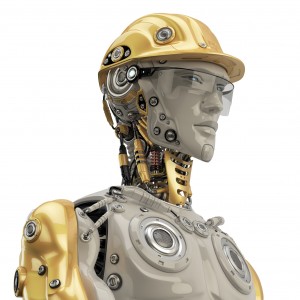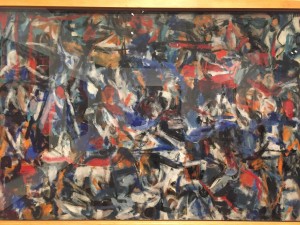Politics — Lying Versus Bullshitting

You talkin’ to me?
The presidential campaign is about to lurch into high gear and the lying is flying. Or is it? Are the candidates lying or are they bullshitting us? The two concepts are related but not the same.
Let’s take an example from Donald Trump. Trump says that he will build a wall along our southern border and make Mexico pay for it. Many neutral observers claim that it would be prohibitively expensive to build a useful (that is, impenetrable) wall along the entire border. They also suggest that it’s ludicrous to believe that Mexico would pay for it. So is Trump lying or is he bullshitting?
To answer the question, I dug out an essay by the Princeton philosopher, Harry Frankfurt. Originally published in 1986, the essay is aptly tilted, On Bullshit. * Frankfurt lays out the essential differences between lying and bullshit (with a side trip through humbug).
Frankfurt argues that both bullshit and lying are deceptive – but they’re deceptive in different ways. The liar aims to deceive us about reality and “the way things are.” A liar might say that he has a million dollars when he’s actually flat broke. A bullshitter, on the other hand, aims to deceive us about his purpose. Frankfurt writes, “His eye is not on the facts at all…. He does not care whether the things he says describe reality correctly. He just picks them out, or makes them up, to suit his purpose.”
Further, a liar knows the truth and seeks to conceal it. He opposes the truth. By contrast, a bullshitter may or may not know what the truth is – and certainly doesn’t care. Indeed, he may even be telling the truth. Making a true statement or a false statement is beside the point. As Frankfurt notes, “…the truth … of his statements is of no central interest to him.”
A liar is under numerous constraints. He knows the truth and, “…to invent an effective lie, he must design his falsehood under the guidance of that truth.” A bullshitter has no such constraints. He can make everything up, including the context and the backstory. Instead of making a statement about reality, he invents his own reality.
Indeed, the bullshitter avoids the “authority of the truth” altogether. Frankfurt writes that, “He pays no attention to [the truth] at all. By virtue of this, bullshit is a greater enemy of the truth than lies are.”
So is Trump lying or bullshitting about the wall? I’m guessing that he’s bullshitting. He doesn’t seem to care whether his statement is true or false. That’s beside the point. He just makes stuff up to suit his purpose.
So, if making a true statement (or a false one, for that matter), is beside the point, what is his hidden agenda? I think there are two:
- To maximize attention and press coverage – every time Trump makes an outrageous statement, journalists write about it. Often times, they point out that the statement is not true. But that’s beside the point. Trump doesn’t care – nor do his followers, apparently. The point is to get elected and that requires attention and saturation coverage.
- To soak up his opponents’ time – Trump’s opponents often make detailed rebuttals of his claims. They want to set the record straight. But as long as they’re doing that, they’re on Trump’s turf. He’s the center of attention. It’s political rope-a-dope. I’ve noticed that Trump rarely defends his points in any logical way. He simply repeats them, thus causing his opponents to redouble their efforts to prove him wrong. He gets their goat because they think he’s lying when, in fact, he’s bullshitting. Setting the record straight is useless if truth and falsity are beside the point.
So how can Trump’s opponents – Johnson and Clinton – best deal with his bullshitting? To the maximum extent possible, they should ignore him. Don’t get caught up in the trap of making him the center of attention. When a journalist asks about an outrageous Trump statement, don’t take the bait. Just say something along the lines of, “Well, we all know that he’s a world-class bullshitter. Let’s talk about something more useful.”
* Frankfurts’ essay was originally published in The Raritan Quarterly Review in 1986. It was then republished in 2005 as a small book. I’ve depended on the version that’s found here.
Innovation In Our Refrigerator

How can I innovate here?
When we think of innovation, we often think of bright young people working in creatively organized offices while pushing the envelope and thinking outside the box. It’s fun, exciting, challenging, and maybe even a little bit sexy. It’s the kind of job we all want.
But what about the rest of the world?
Much of the innovation that I have observed takes place in rather mundane places and involves rather ordinary business or social processes. It’s the act of taking some thing (or some process), observing how it’s used, and designing a better way to do it. If we think about innovation only as the process of creating something entirely new, we’ll miss many, many opportunities to change the world for the better.
Take our refrigerator, for instance.
Suellen and I were recently on vacation and asked a very responsible young woman named Alyssa to house sit for us. As soon as we left, our refrigerator stopped working. Alyssa organized a service call, coordinated with the repairman, and had the refrigerator repaired in a jiffy. From our perspective, it was virtually painless (except for the bill, of course).
When we arrived back home, we also got a pleasant surprise. Alyssa had completely reorganized the interior space of the refrigerator. She had examined the food items we keep and adjusted shelves and drawers to fit our lifestyle. She used the space much more efficiently and made frequently used items more readily available. It’s now simpler and easier to store and retrieve our food.
Why hadn’t we organized our fridge more effectively? We never thought about it. It’s one of those ordinary, mundane appliances that doesn’t attract our attention. It’s not leading edge, or state of the art, or sexy. Though we use it every day, we never considered how we might improve it. When the refrigerator arrived in our house, we simply put our food in it. We didn’t think about rearranging shelves or drawers to improve utility and efficiency. It took Alyssa to apply design thinking to an ordinary, everyday item.
We describe some things as “wallpaper” because they recede into the background. We don’t need to pay much attention to them. We don’t consider them as opportunities to create and innovate. But we interact with our wallpaper everyday. That makes even small innovations meaningful and impactful. If you want to be an innovator, spend more time on wallpaper and less time thinking outside the box.
Male Chauvinist Machines

Yanks win last night?
Do men and women think differently? If they do, who should develop artificial intelligence? As we develop AI, should we target “feminine” intelligence or “masculine” intelligence? Do we have enough imagination to create a non-gendered intelligence? What would that look like?
First of all, do the genders think differently? According to Scientific American, our brains are wired differently. As you know, our brains have two hemispheres. Male brains have more connections within each hemisphere as compared to female brains. By contrast, female brains have more connections between hemispheres.
Men, on average, are better at connecting the front of the brain with the back of the brain while women are better at connecting left and right hemispheres. How do these differences influence our behavior? According to the article, “…male brains may be optimized for motor skills, and female brains may be optimized for combining analytical and intuitive thinking.”
Women and men also have different proportions of white and gray matter in their brains. (Click here). Gray matter is “…primarily associated with processing and cognition…” while white matter handles connectivity. The two genders are the same (on average) in general intelligence, so the differences in the gray/white mix suggest that there are two different ways to get to the same result. (Click here). Women seem to do better at integrating information and with language skills in general. Men seem to do better with “local processing” tasks like mathematics.
Do differences in function drive the difference in structure or vice-versa? Hard to tell. Men have a higher percentage of white matter and also have somewhat larger brains compared to women. Perhaps men need more white matter to make connections over longer distances in their larger brains. Women have smaller heads and may need less white matter to make the necessary connections — just like a smaller house would need less electrical wire to connect everything. Thus, a larger proportion of the female brain can be given over to gray matter.
So men and women think differently. That’s not such a surprise. As we look ahead to artificial intelligence, which model should we choose? Should we emphasize language skills, similar to the female brain? Or local processing skills, similar to the male brain? Should we emphasize processing power or information integration?
Perhaps we could do both, but I wonder how realistic that is. I try to imagine what it would be like to think as a woman but I find it difficult to wrap my head around the concept. As a feminist might say, I just don’t get it. I have to imagine that a woman trying to think like a man would encounter similar difficulties.
Perhaps the best way to develop AI would involve mixed teams of men and women. Each gender could contribute what it does best. But that’s not what’s happening today. As Jack Clark points out, “Artificial Intelligence Has A “Sea of Dudes’ Problem”. Clark is mainly writing about data sets, which developers use to teach machines about the world. If men choose all the data sets, the resulting artificial intelligence will be biased in the same ways that men are. Yet male developers of AI outnumber females by a margin of about eight-to-one. Without more women, we run the risk of creating male chauvinist machines. I can just hear my women friends saying, “Oh my God, no!”
The Art Of Transformation
 What’s the difference between an art and a craft?
What’s the difference between an art and a craft?
A traditional definition focuses on differences in expectations and outcomes. With a craft, we know precisely what the outcome will be, even before we start. We have a set of instructions and, if followed faithfully, the outcome is guaranteed.
By contrast, an artist doesn’t know what the outcome will be. Creating an artwork involves exploration, doubt, questioning, trial-and-error, and no small amount of anxiety. An artist explores the unknown and aims to give us new insights. A good artwork may not be beautiful in a classic sense, but it is always imaginative. A craftsman, on the other hand, creates the expected and delivers beauty and pleasure through execution more than imagination.
I thought of these distinctions the other day when I toured a major new exhibition, Women of Abstract Expressionism*, at the Denver Art Museum. The exhibition highlights a dozen leaders of the abstract expressionist movement and their work from roughly 1945 to 1960. Here’s how two of the artists describe the creative process:
- Grace Hartigan: “Eventually, the painting tells you what it wants to be.”
- Jay DeFeo: “When I start, I don’t know what’s going to happen. When you’re dancing, you don’t stop to think: now I’ll take a step … you allow it to flow.”
It occurs to me that the distinction between art and craft also applies to organizational development. Change management is a craft. Organizational transformation is an art.
We often invoke change management when we begin a concise and well-delineated project. We understand the boundaries and the players. We move through well-defined phases that we can measure objectively. We expect changes to occur between people – perhaps with new reporting structures and alignments. Change management is not easy to master but it seems to me that it is a craft. We often celebrate the end result. We can do that precisely because it is a craft – we know when the process ends.
Organizational transformation is much more like an art. When we seek to transform an organization’s culture, we have only a fuzzy idea of where we’re going. Milestones exist but they’re not well defined. Transformation requires changes within people rather than only between people. We can’t see those changes; nor can we measure them. If we try to measure the unmeasurable, we’ll go off course. Like any other art, transformation involves exploration, doubt, questioning, trial-and-error, and no small amount of anxiety. Paraphrasing Grace Hartigan, “Eventually, the organization tells you what it wants to be.” The secret to success is listening, not measuring.
I sometimes ask my artist friends how they know when a piece they’re working on is finished. None of them has very good answers. Some say they “just know”. Others say that they just get tired of it. Others say that it’s never finished. Whenever they see it again, they’re tempted to make “just a few minor changes.”
It occurs to me that I’ve never been to a party to celebrate an organizational transformation. Perhaps it’s because we just don’t know when the transformation is finished. It’s an art not a craft.
*The Women of Abstract Expressionism exhibit is both superb and unexpected. The paintings are exciting and energetic. The painters are almost anonymous. This is the first major exhibition – anywhere in the world — of the women who energized the abstract expressionist movement. That it happened in my hometown makes me more than just a little bit proud. You can see it – and should see it — until September 25th.
The painting illustrating this article is Grace Hartigan’s The King Is Dead, from 1960.
Consciousness Is A Verb

It’s not in here.
We live in an individualistic culture and I wonder if that doesn’t bias our understanding of how we behave and think. For instance, we view humans as self-contained and self-sufficient units. There’s a clear boundary between one human and another. Similarly, there’s a clear boundary between each individual and the environment around us. We are separate from each other and from the world.
But what if that’s not the case? What if humans are entangled with each other in much the same way that quantum particles are entangled? Mirror neurons are still somewhat mysterious but what if they allow us to entangle our thoughts with those of other people? Similarly, we’ve learned in the recent past that we think with our bodies as much as our brains. What if our thinking actually extends beyond our bodies and interacts with other thoughts?
Similarly, what if the environment is not separate from us but part of us? What if the environment shapes us much like a river shapes a stone? In a sense, it would mean that we’re not entities but processes. We’re not things but actions. The Buddhists might be right: impermanence is the very essence of our being.
If these things are true, it may give us a key to understanding consciousness. Defining consciousness is known as the “hard problem”. Neuroscientists often phrase the question simply: “What is consciousness?” What if that’s the wrong question? The question implies that consciousness is a thing. It also suggests that consciousness exists somewhere, most likely in the brain. But what if consciousness is not a thing but an action? What if it’s something we do as we interact with the environment? What if we’re swimming in consciousness?
You may have guessed by now that I’ve been reading the works of the philosopher, Alva Noë. (See here and here). Noë studies perception and consciousness and tries to understand how they are entangled. Noë states flatly that, “Consciousness is not something that happens in us. It is something we do.”
Noë goes on to compare consciousness to a dancer, who is influenced by myriad external factors, including the music, the dance floor, and her partner. Dancing is not within the dancer. Noë writes that, “The idea that the dance is a state of us, inside of us, or something that happens in us is crazy. Our ability to dance depends on all kinds of things going on inside of us, but that we are dancing is fundamentally an attunement to the world around us.” Similarly, Noë suggests, consciousness is not within us, rather it is “…a way of being part of a larger process.”
Noë similarly argues that consciousness is not located in a given place. The analogy is life itself. If we look at other people, we can tell that they’re alive. But where is life located in them? We quickly realize that we don’t think of life as a thing that is located in a certain place. Life is not a thing but a dynamic. Noë argues that the same is true of consciousness.
Noë also suggests that cognitive scientists are pursuing the wrong analogy – the computer. This “distinctively nonbiological approach” converts consciousness into a mere computational function that is “…very much divorced from the active life of the animal.” The active life – and engagement with the world around us – creates consciousness in a way that a “brain in a vat” could never do.
What’s it all mean? We’re looking for consciousness in all the wrong places. As Noë concludes, “…the idea that you are your brain or that the brain alone is sufficient for consciousness is really just a mantra, and … there is no reason to believe it.”